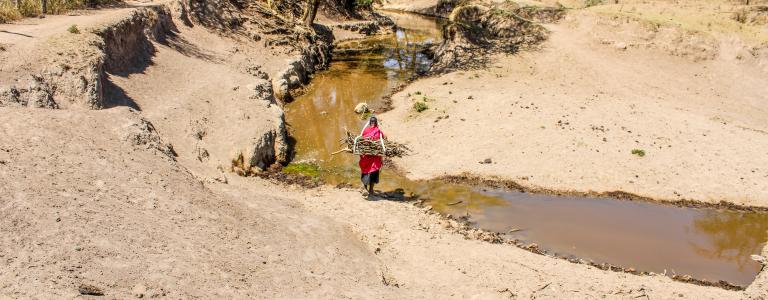What Is the NAP Assessment at COP 29, and Why Does It Matter?
At the 29th UN Climate Change Conference (COP 29) in Baku, countries will assess their progress in formulating and implementing their National Adaptation Plans. IISD’s adaptation experts Orville Grey and Jeffrey Qi explain what that means, and what’s at stake.
What is the Assessment of Progress in the NAP Process?
The benefits of adaptation have the potential to be widespread and long-lasting. As global temperatures rise, national adaptation plans (NAPs) remain the main vehicle for countries to systematically build resilience, enhance adaptive capacity, and reduce vulnerability to climate change. The NAP process enables countries to identify and address their medium- and long-term priorities for adapting to climate change and establish the systems and capacities needed to make adaptation an integral part of their development planning, decision making, and budgeting.
The NAP process was established under the United Nations Framework Convention on Climate Change in 2010. Since then, technical guidelines have been developed, extensive capacity building undertaken, dedicated funding windows opened, and various support initiatives—such as the NAP Global Network—launched.
Mandated by a decision from COP 26, countries are aiming to complete the NAP assessment at COP 29 in Baku.
More specifically, it represents an opportunity to
- recognize the importance of adaptation and the NAP process, as well as the adaptation efforts of developing country Parties;
- acknowledge the support provided and received for developing countries’ NAP processes;
- highlight challenges, obstacles, gaps, and needs faced by developing countries in the NAP process;
- provide best practices and recommendations toward the future to enhance and scale up adaptation actions in developing countries, and transition countries’ NAP processes from planning to implementation.
You can see the NAP Global Network’s submission to this process here.
Why is this Assessment of Progress Important?
Developing, strengthening, and implementing NAPs is a critical way for countries to reduce vulnerabilities and build climate resilience. It’s an opportunity to assess progress, learn, and figure out what is needed to transition from planning to implementation.
In 2015 and 2018, Parties faced challenges in assessing the progress of the NAP process due to a lack of available information and a low number of NAPs being submitted and implemented. However, as of November 1, 2024, 59 developing countries have submitted NAP documents, and over 140 countries have initiated the NAP process. Since the last assessment in 2018, developing countries have made important advances in adaptation planning and implementation, so it is time to understand what is working and what needs critical attention to accelerate global adaptation action.
What should the final decision include?
We need a fair, balanced, and robust outcome on the NAP assessment in Baku. It must reinforce the outcome of the first global stocktake from last year and highlight the critical importance of adaptation and the NAP process.
The final decision needs to acknowledge the adaptation efforts of developing countries over the last decade while highlighting key challenges, experiences, and best practices to inform the way forward.
Although countries have made tremendous progress in formulating NAPs, implementing these national plans and strategies has been incremental and uneven across geographies. The NAP decision at COP 29 must signal the urgent need to accelerate efforts to mainstream adaptation and invest in countries’ transition from adaptation planning to implementation.
Drawing on the NAP Global Network’s experience and research, we want to see a COP 29 decision that clarifies the adequacy and effectiveness of the adaptation actions and the support provided to date. This will help countries, support networks, and other stakeholders better understand and fill the adaptation implementation and finance gap.
It is equally important to highlight the principles and enabling conditions needed to ensure the NAP process is inclusive and delivers an effective, equitable outcome leaving no one behind. These include the need for adaptation mainstreaming, gender equality and social inclusion, vertical integration of sub-national-level actors, and monitoring, evaluation, and learning for adaptation.
Lastly, sufficient means of implementation, especially finance and capacity building, will continue to be crucial for transitioning countries’ NAP processes from planning to implementation. COP 29 will be a finance-focused COP, and the NAP assessment has the opportunity to identify key challenges developing countries face when trying to access adaptation finance and secure commitments to ramp up the provision and mobilization of finance for the NAP process.
Participating experts
You might also be interested in
Progress on Vertical Integration in National Adaptation Plan Processes
This synthesis report presents an analysis of how countries are advancing vertical integration in national adaptation plan processes.
Four Key Elements to Ensure a Successful Global Goal on Adaptation
As the final rounds of negotiations on the GGA kick off at COP 28, a looming question remains: Will it be comprehensive enough for countries to implement in the years ahead?
Public Engagement on Climate Change Adaptation
This report provides an introduction to public engagement on climate change adaptation for decision-makers involved in leading national adaptation plan (NAP) processes.
Learning From Gender-Responsive National Adaptation Plan Processes: Insights from countries to inform the review of the UNFCCC Gender Action Plan
Based on the priority actions of 10 African and Caribbean countries for integrating gender equality in their National Adaptation Plan (NAP) processes, we identified recommendations for effectively advancing the Gender Action Plan (GAP) under the United Nations Framework Convention on Climate Change (UNFCCC).


